Table of Contents
- 1 Wisteria and Hardenbergia Features
- 2 Ornamental Grape Attributes
- 3 Star Jasmine Advantages
- 4 Bougainvillea Growth Tips
- 5 Selecting Suitable Climbers
- 6 Tips for Choosing Climbing Plants for Your Garden
- 7 HANGING PLANTS FROM YOUR PERGOLA
- 8 Frequently Asked Questions
- 8.1 How Do Native Australian Climbing Plants Contribute to Local Ecosystems and Support Wildlife?
- 8.2 Can Australian Climbing Plants Be Used for Both Decorative and Practical Purposes, Such as Creating Living Screens or Food Sources for Local Fauna?
- 8.3 What Are the Specific Soil Requirements for Australian Climbing Plants to Ensure They Thrive on a Pergola Structure?
- 8.4 How Can You Manage Invasive Tendencies in Vigorous Australian Climbing Plants to Prevent Them From Overtaking Other Garden Plants?
- 8.5 Are There Any Climbing Plants Native to Australia That Are Particularly Resistant to Common Pests and Diseases, Making Them Low-Maintenance Choices for Pergolas?
- 9 Conclusion
When building my pergola, I knew I wanted to incorporate climbing plants that thrive in the local conditions and add striking visual flair. I find that favorites like Wisteria and Hardenbergia, with their vigorous growth and gorgeous cascades of flowers, provide both shade and a pop of color. The Ornamental Grape is another top choice, valued for its impressive display of red and orange autumn foliage, even if it doesn’t yield fruit. For year-round greenery, I often recommend Star Jasmine and Bougainvillea. Star Jasmine gives the bonus of sweetly fragrant white blooms. Bougainvillea, with its vivid hues, does well with frequent trimming.
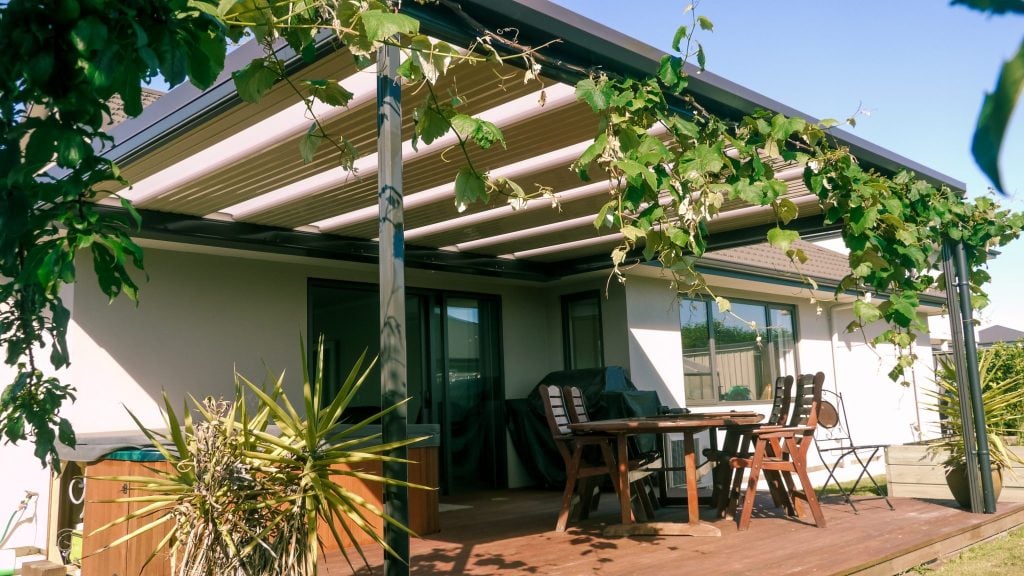
When selecting climbers for pergolas, I think carefully about how they grow, their suitability for the area’s climate, and their care requirements. This allows me to choose plants that will enhance my outdoor space over time with minimal upkeep
By considering growth habits and regional compatibility when making my choices, I can ensure my pergola not only achieves the visual wow-factor I’m after, but thrives in my garden.
Wisteria and Hardenbergia Features
Wisteria and Hardenbergia are two climbers that really make your pergola stand out.
With its thick leaves and hanging bunches of sweet-smelling mauve to violet flowers, wisteria brings a dramatic floral show to your garden in early spring. This vine sheds its leaves in winter, which lets the sunlight through and warms your space.
On the other hand, Hardenbergia stays green all year with its sturdy dark green leaves. It bursts into dark purple flowers that add a touch of color to your outdoor area.
Trimming Hardenbergia after the cold season helps it grow thicker and boosts its bloom, giving you both shade and a beautiful garden no matter the season.
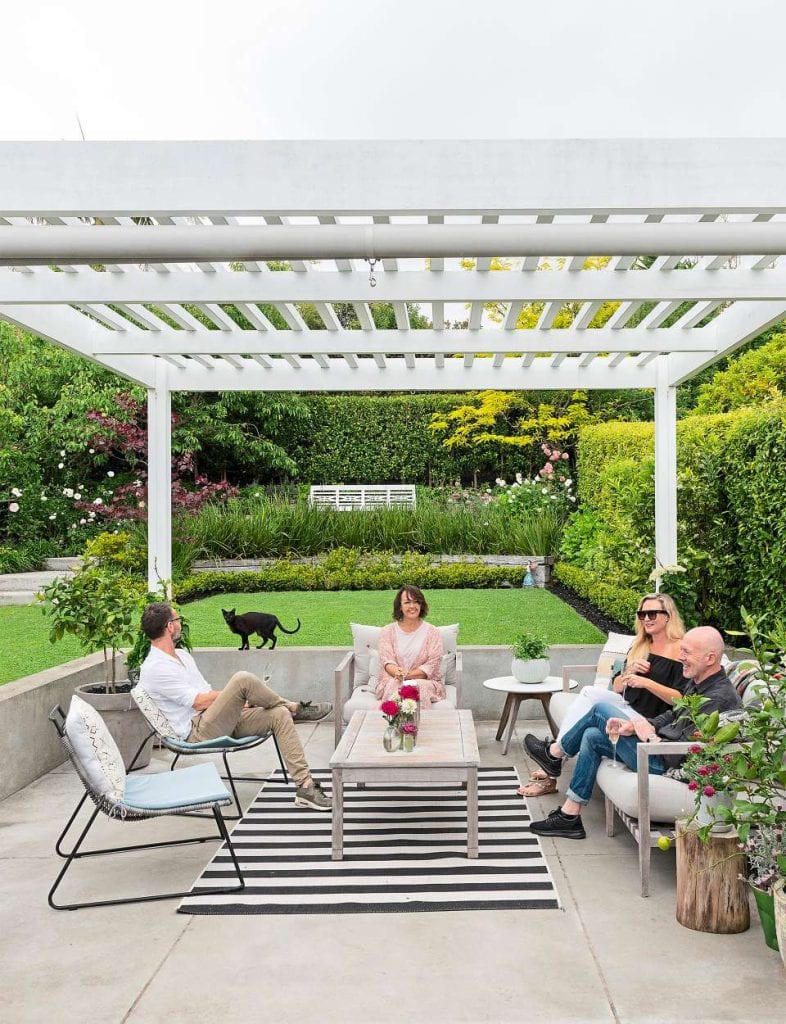
Ornamental Grape Attributes
Moving on to another great plant for Australian pergolas, the Ornamental Grape vine is a fantastic choice. It’s related to the grapevines grown for wine but is used for decoration, so you won’t have to worry about fallen fruit or cleaning up.
During the summer, its big green leaves provide plenty of shade, perfect for outdoor areas. When autumn rolls in, these leaves turn a brilliant orange and red, creating a beautiful scene before they fall off. This lets the sun’s warmth through in winter.
The changing colors and coverage of the Ornamental Grape vine throughout the seasons not only make your pergola look great but also help control the light and temperature for year-round enjoyment.
Star Jasmine Advantages
Star Jasmine is a plant that brings year-round visual appeal and a delightful scent to spaces like pergolas. This climbing plant is not just a treat for the eyes; it also serves practical uses in a garden. Its thick leaves offer a natural screen for privacy, and it’s tough enough to handle various weather conditions in Australia.
Here’s a quick guide to the benefits of Star Jasmine:
| Feature | Benefit | Consideration |
|---|---|---|
| Persistent Greenery | Ensures the garden stays vibrant throughout the year | Needs regular care |
| Scented Flowers | Adds a pleasant aroma to your outdoor space | Best flowering in direct sunlight |
| Thick Leaves | Ideal for creating private, shaded areas | Requires support to grow upwards |
| Tough Plant | Grows well in different settings | May spread too much if not controlled |
| Simple Care | Generally easy to look after once it’s settled | Occasional trimming can promote better growth |
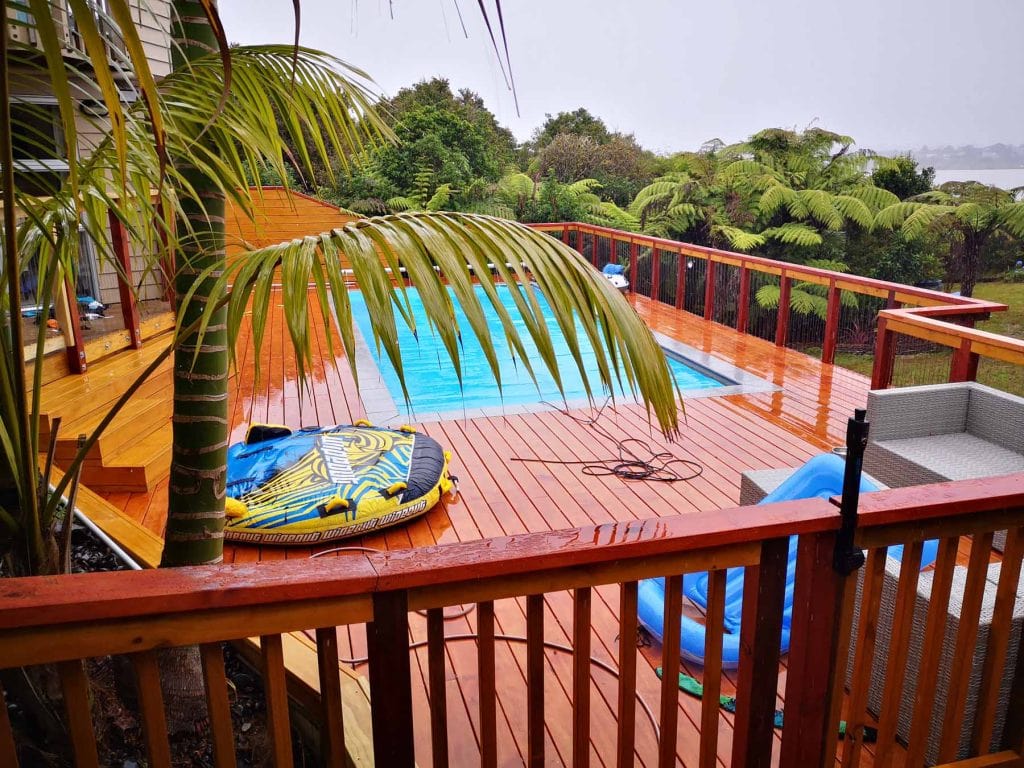
Star Jasmine can be an excellent addition to your garden for both its beauty and utility. Its greenery lasts throughout the year, adding structure to your garden even in colder months. The white flowers release a lovely fragrance that can make your outdoor area more inviting. It’s particularly useful for those wanting to add some privacy or shade to their garden without extensive maintenance. However, while the plant is sturdy and adaptable, it’s best to keep an eye on its growth to prevent it from taking over. Once it’s established, it requires minimal care, though a little pruning can help it flourish even more.
Bougainvillea Growth Tips
To grow bougainvillea plants successfully, they need lots of sunlight and soil that drains well. These colorful plants do best when they can soak up the sun for at least six hours each day, which helps them bloom beautifully. When you’re getting ready to plant them, mix in some compost or other organic materials to feed the soil, but make sure water doesn’t stay pooled around the roots to avoid rot.
It’s best to water the plants deeply but not too often, letting the soil dry out a bit before giving them another drink. If they get too much water, you might not get as many flowers and the plants can develop diseases. Feed your bougainvillea with a fertilizer that’s high in potassium to promote blooming, not just leaves.
After the plant has shown off its flowers, it’s time to prune. This keeps the plant looking tidy, gets rid of dead branches, and encourages more blooms later on. If you keep up with light pruning throughout the year, your plant will be ready to impress with another round of vibrant flowers when it’s time.
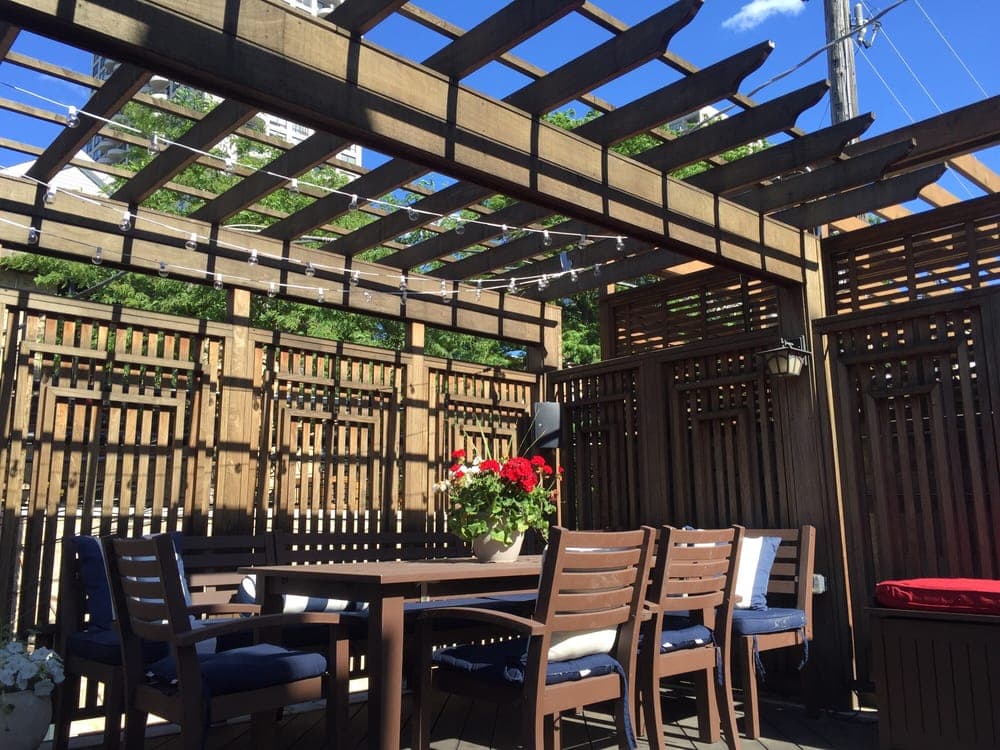
Selecting Suitable Climbers
When picking out climbers to adorn a pergola, it’s smart to think about how well the plant will do in your area’s weather, its growing tendencies, and how much work it needs to keep looking good. You’ll want to get familiar with the different types of climbing plants and see which ones fit your garden’s conditions and your personal taste. You might find some climbers bursting with colorful flowers, while others boast green leaves throughout the year.
Let’s take a look at some climbers that could be a great match for your pergola:
| Climber | Flowering Season | Maintenance Required |
|---|---|---|
| Wisteria | Early Spring | Prune after flowering |
| Hardenbergia | Winter to Spring | Trim to keep it thick |
| Ornamental Grape | N/A | Cut back in fall |
| Star Jasmine | Late Spring | Occasional trimming |
Think about these aspects to make sure your pergola not only looks stunning but is also easy to take care of and fits well with the weather in your region.
Tips for Choosing Climbing Plants for Your Garden
When you’re picking out climbing plants for your garden, think about how they’ll handle your local weather, their growth habits, and how much care they’ll need. It’s smart to pick plants that grow well in your area’s climate to make sure they thrive.
For example, Wisteria and Hardenbergia are great choices for areas with milder weather because they change with the seasons. If you want plants that stay green all year, Star Jasmine and Bougainvillea are reliable choices.
Consider how quickly and how large the plants will grow; for instance, Bougainvillea grows fast and needs regular trimming to keep it looking good and under control. Talk to garden centers nearby to find out which climbers do best where you live and ask about how much sun they need so you can plant them in the best spot.
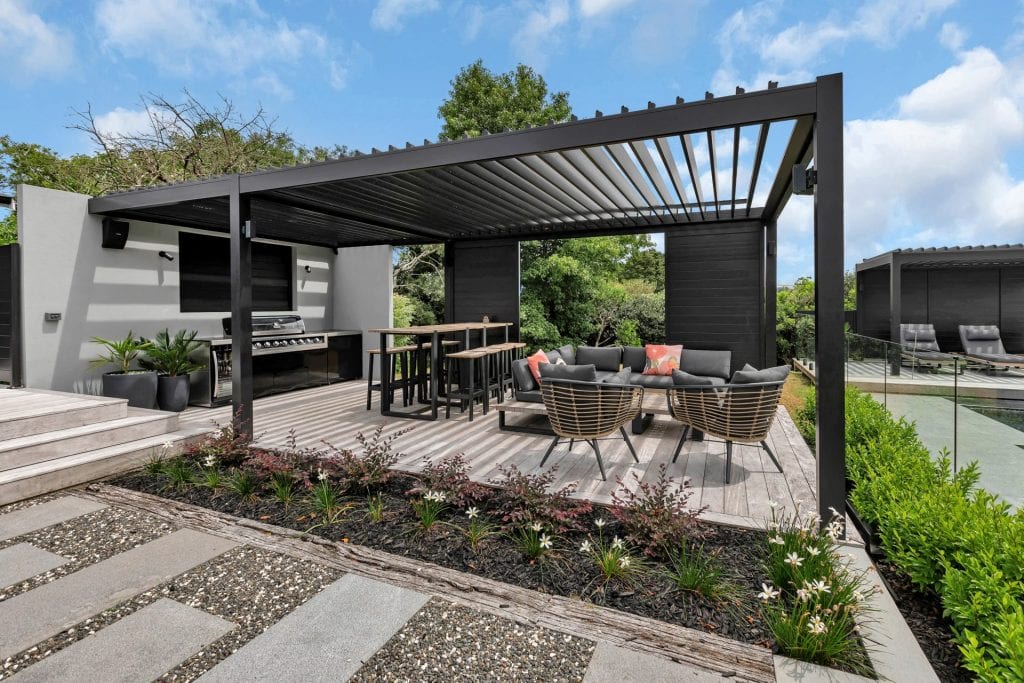
Also, think about when the plants flower so you can enjoy their beauty throughout the year.
HANGING PLANTS FROM YOUR PERGOLA
Hanging plants can transform your pergola into a refreshing retreat filled with greenery and colorful flowers. When you’re choosing plants to hang, think about how they’ll look, how much care they’ll need, and whether your pergola can hold them up.
Keep these points in mind:
- Pick Strong Planters: Make sure your planters can carry the weight of both the soil and the plants when they’re full-grown and have been watered.
- Choose the Right Plants: Go for plants that do well in hanging pots, like ferns, succulents, or cascading blooms such as petunias.
- Consistent Care: Since they’re out in the open and have less soil, hanging plants might need you to water and feed them more often.
Frequently Asked Questions
How Do Native Australian Climbing Plants Contribute to Local Ecosystems and Support Wildlife?
Native Australian climbing plants play a vital role in the health and diversity of their environments. They do this by creating homes and providing food for various animals, which helps to keep ecosystems running smoothly. For example, some climbing plants offer nectar for birds and insects, while their dense foliage can serve as shelter for small mammals and reptiles. These plants can also help with soil stability and prevent erosion by covering the ground and other structures with their growth. This helps maintain the quality of the land, which benefits all living things in the area. By supporting such a wide range of life, these climbers are fundamental to sustaining the complex web of life in Australian habitats.
Can Australian Climbing Plants Be Used for Both Decorative and Practical Purposes, Such as Creating Living Screens or Food Sources for Local Fauna?
Australian climbing plants are versatile, offering both visual charm and practical uses. They can transform a plain wall or fence into an attractive green space, and at the same time, serve as natural partitions. These plants also play a key role in supporting wildlife by providing food for birds and insects. This combination of decorative beauty and functionality supports a healthy ecosystem and adds value to our gardens and outdoor spaces.
What Are the Specific Soil Requirements for Australian Climbing Plants to Ensure They Thrive on a Pergola Structure?
To ensure Australian climbing plants flourish when grown on a pergola, the soil needs to be loose and drain well, while also being rich in organic material. It’s also vital to feed the plants regularly with fertilizer and keep the soil’s pH level balanced for the plants to grow well.
How Can You Manage Invasive Tendencies in Vigorous Australian Climbing Plants to Prevent Them From Overtaking Other Garden Plants?
To keep aggressive Australian climbing plants in check and protect your garden’s variety, consistent trimming is key. Setting up physical barriers and specific supports can also help control their growth, ensuring they don’t infringe upon nearby plants and maintaining a well-ordered garden space.
Are There Any Climbing Plants Native to Australia That Are Particularly Resistant to Common Pests and Diseases, Making Them Low-Maintenance Choices for Pergolas?
In Australia, some native climbing plants are known for their resilience against common pests and diseases, which means they require less care. These hardy climbers are perfect for decorating pergolas without much hassle.
For instance, the Australian native Hardenbergia violacea, also known as Happy Wanderer, is a robust climber that’s not only beautiful with its purple flowers but also tough against many pests. It’s an excellent choice for gardeners who want to add some green to their pergolas without constant worry about maintenance. Another good option is the Pandorea pandorana, the Wonga Wonga Vine, which thrives in various conditions and is typically healthy and pest-resistant.
Conclusion
Pergolas come to life with the vivid colors of flowering climbers.
The purple and white flowers of Wisteria and Hardenbergia stand out against the bright red and orange leaves of the Ornamental Grape as it changes with the seasons.
For those who prefer greenery all year, Star Jasmine and Bougainvillea maintain a lush appearance with their constant green leaves and bursts of flowers.
When choosing climbing plants, it’s wise to look at how they grow and whether they’re suited to your local environment.
This way, you create a pergola that is not only a feast for the eyes but also grows well in your garden.
